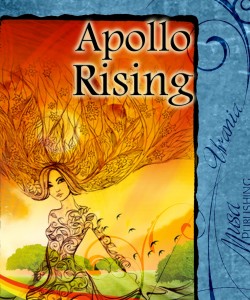Sometimes life has a way of sitting you down hard, making you take stock and reevaluating what you took for granted. During one of these angsty periods, I found myself rethinking life goals and roles. Then came the hard part – articulating it. Somehow I had to find the words to define my feelings but I also needed the proper ones to express in a meaningful way what I was learning.
That got me thinking about dialogue in fiction and how we use it to convey information about characters like how they truly see the world.
The tendency is to make our protagonists the hero with a few issues who overcomes them and saves the day. As they are the point-of-view character, we learn a lot about how the character sees his world and reacts to it. With good writing, all the senses can be engaged. But, what about dialogue? Good dialogue is a window to a character’s soul. It is an opportunity to reveal, not tell.
‘Please, sir, I want some more.’
Who can ever forget that one famous line from Oliver Twist by Charles Dickens? Not only does it convey a little boy’s desperation, his starved state and his courage, it also informs us about the society in which he lives. The repetition of that simple phrase first by Oliver, then by Bumble who runs the workhouse and finally by Limbkins, Chairman of the Board of Guardians, firmly places Oliver’s words in our minds thus forcing us to live the horror of the statement from several points of view. This one simple piece of dialogue allows us to see and feel several aspects of a society.
This is followed by an equally simple phrase uttered and repeated: ‘That boy will be hung,’ said the gentleman in the white waistcoat. ‘I know that boy will be hung.’ There are no exclamation marks and no grandiose gestures, yet that simple statement followed by the simple speech tag said leaves us horrified.
There is a tendency to want to make characters appear smart and witty with that great comeback we would have liked to have when we ourselves were in an awkward situation. As writers, we must take care not to be helicopter parents, hovering over our characters, making them experience their lives the way we’d like to if we were them. Helicoptering can lead to sitcom dialogue – flat, witty characters without real depth – with purpose perhaps but not with depth.
Of all the books I’ve read and all the movies I’ve seen, my favorite dialogue, all 131 minutes of it, comes from the screen play of Edward Albee’s play, Who’s Afraid of Virginia Wolfe? starring Elizabeth Taylor and Richard Burton. The first time I saw it, I was a kid off the farm in first year university. I was appalled. For over two hours, these characters did nothing but fight. To me, it was simple, ordinary, and all too familiar. How could this movie be critically acclaimed?
Yet, it is the one movie which I remember vividly. That script keeps me spell bound. Using simple dialogue, Albee captures failed marriages perfectly. The characters are vile – definitely not sympathetic – yet I’m riveted to the script. The dialogue is not mannered, not witty – it is ordinary yet perfectly captured. It rolls quickly. It’s fast paced. The reveal, the show, are perfectly executed as demonstrated in this exchange between Martha and George:
M: (swinging around) Look, sweetheart, I can drink you under any goddamn table you want … so don’t worry about me!|
G: Martha, I gave you the prize years ago… There isn’t an abomination award going that you….
M: I swear … if you existed I’d divorce you….
G: Well, just stay on your feet, that’s all… These people are your guests, you know, and…
M: I can’t even see you… I haven’t been able to see you for years….
G: …. if you pass out, or throw up or something…
M: …. I mean, you’re a blank, a cipher….
G: …. and try to keep your clothes on, too. There aren’t many more sickening sights than you with a couple of drinks in you and your skirt up over your head, you know…
M: …. a zero…
(Script excerpt from: C/file/view/Script+for+Who’s+afraid+of+Virginia+Woolf.pdf)
Take the time to understand not only what motivates your characters, but what their fears, their disappointments, their hopes and aspirations are for that will not only determine their actions and reactions, but it will give them unique and strong voices which will reveal more about them than any well written prose can tell.
Happy Writing!




